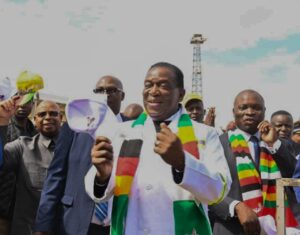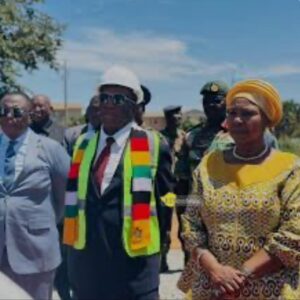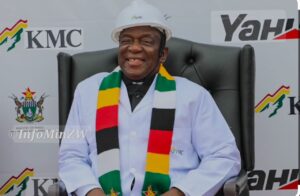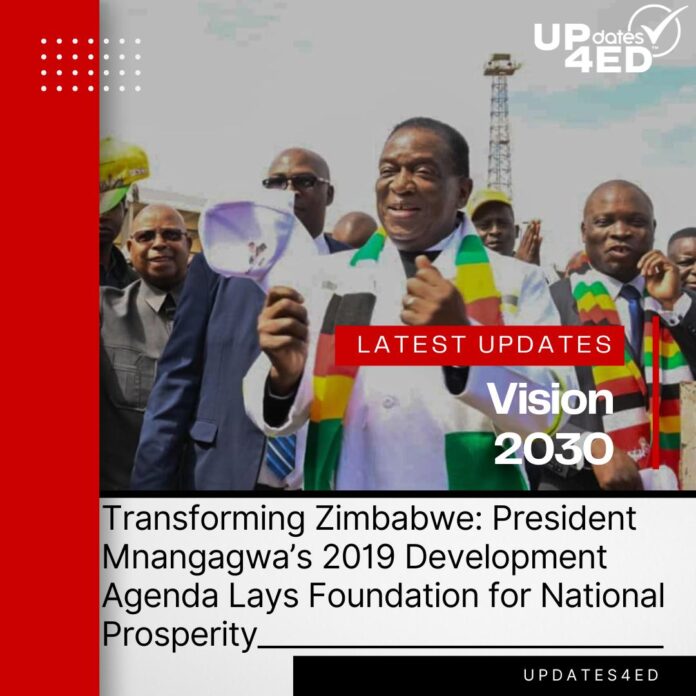In 2019, under the leadership of His Excellency President Emmerson Dambudzo Mnangagwa, Zimbabwe embarked on a transformative journey that aimed to reshape the socio-economic landscape of the country. With a clear vision for the future, the President’s 2019 Development Agenda laid the foundation for a prosperous and modern Zimbabwe, one that is poised to emerge as a regional and global player by 2030.
This agenda was not simply a collection of policy statements; it was a concrete, results-driven roadmap that delivered significant projects and reforms to spur national development. The vision of Vision 2030, which President Mnangagwa champions, is built on a desire to uplift Zimbabwe’s people, economy, and institutions, ensuring that they are aligned with the demands and opportunities of the 21st century.
The Vision 2030 Blueprint: A New Dawn for Zimbabwe
 Vision 2030 is the overarching framework for President Mnangagwa’s agenda. It outlines the ambitious goal of transforming Zimbabwe into an upper-middle-income economy by 2030, focused on industrialization, infrastructure development, social services, and job creation. The foundation laid in 2019 was designed to address Zimbabwe’s pressing challenges, while fostering an environment of sustainable growth and self-reliance.
Vision 2030 is the overarching framework for President Mnangagwa’s agenda. It outlines the ambitious goal of transforming Zimbabwe into an upper-middle-income economy by 2030, focused on industrialization, infrastructure development, social services, and job creation. The foundation laid in 2019 was designed to address Zimbabwe’s pressing challenges, while fostering an environment of sustainable growth and self-reliance.
Through this Vision, Zimbabwe aims to not only recover from the challenges of the past but to embrace modernity, technological advancement, and sustainable resource utilization.
Infrastructure Development: Building the Backbone of Economic Growth
 One of the core pillars of President Mnangagwa’s 2019 development agenda was infrastructure development. This was viewed as the key to unlocking economic potential and creating a foundation for future growth. Roads, energy, water, and telecommunications infrastructure were prioritized, with the understanding that a modern infrastructure network is integral to economic prosperity.
One of the core pillars of President Mnangagwa’s 2019 development agenda was infrastructure development. This was viewed as the key to unlocking economic potential and creating a foundation for future growth. Roads, energy, water, and telecommunications infrastructure were prioritized, with the understanding that a modern infrastructure network is integral to economic prosperity.
- Road Construction and Rehabilitation: A focus on upgrading the country’s road network was critical for enhancing connectivity and improving trade. The development of highways and rural road networks not only improved access to markets but also created jobs, contributing to poverty alleviation in rural areas.
- Energy and Power Generation: President Mnangagwa’s administration put a strong emphasis on increasing energy production to support industrialization. The government made significant investments in power generation, with projects like the expansion of the Hwange Thermal Power Station aimed at stabilizing the country’s electricity supply. Renewable energy projects were also explored to diversify energy sources and reduce dependency on traditional power plants.
- Water Infrastructure: Access to clean water is fundamental to both public health and industrialization. In line with this, the 2019 development agenda focused on improving water supply systems across the country, especially in rural and peri-urban areas. Investments in irrigation systems were made to enhance food security and increase agricultural productivity, which in turn supports economic stability.
Industrialization and Agricultural Transformation: Reviving Key Sectors
President Mnangagwa’s commitment to transforming Zimbabwe’s economy is evident in the support for industrialization and agricultural reform. The government recognized the need for diversification to reduce dependency on mining and traditional sectors.
- Industrial Parks and Special Economic Zones (SEZs): To jumpstart industrial growth, the government incentivized the development of Special Economic Zones (SEZs), which encouraged foreign investment and the establishment of industries in key regions. These zones were designed to create an enabling environment for local and international businesses to thrive, contributing to job creation, technology transfer, and export growth.
- Agricultural Revival: Agriculture remains the backbone of Zimbabwe’s economy. Under President Mnangagwa’s leadership, the government pursued strategies to revitalize the sector, particularly through mechanization, the provision of inputs to farmers, and the development of value chains. The promotion of irrigation systems aimed to mitigate the effects of climate change and increase agricultural output, ensuring food security for the nation.
- Export Promotion: With a renewed focus on value-added products, President Mnangagwa’s administration worked to boost Zimbabwe’s exports, particularly in sectors like mining, agriculture, and manufacturing. This was done to generate much-needed foreign currency and reduce the trade deficit.
Social Transformation: Empowering the People
 Beyond the economic and industrialization agenda, President Mnangagwa’s 2019 development plan sought to address the social needs of the people. Education, healthcare, and social welfare programs were key components of this vision. The administration focused on improving public services, ensuring access to quality education, and enhancing healthcare infrastructure.
Beyond the economic and industrialization agenda, President Mnangagwa’s 2019 development plan sought to address the social needs of the people. Education, healthcare, and social welfare programs were key components of this vision. The administration focused on improving public services, ensuring access to quality education, and enhancing healthcare infrastructure.
- Education for All: Education remained a priority in the development agenda, with the government introducing programs to improve both primary and secondary education levels. Scholarships and vocational training programs were also implemented to help the youth acquire the necessary skills for the job market.
- Healthcare Services: Efforts were made to revitalize the healthcare sector, with the construction of modern clinics and hospitals in both urban and rural areas. The government also focused on increasing access to essential healthcare services and addressing shortages in medical staff and equipment.
- Social Welfare and Poverty Alleviation: Through various social protection schemes, the government aimed to uplift vulnerable communities, including orphans, the elderly, and people living with disabilities. These programs sought to ensure that the benefits of economic development were equitably shared among all Zimbabweans.
Regional and Global Integration: Strengthening Zimbabwe’s Position on the World Stage
 Under President Mnangagwa’s leadership, Zimbabwe sought to re-engage with the international community, building partnerships that would benefit the country’s development objectives. His administration worked to improve diplomatic ties with neighboring countries, the African Union, and other global organizations.
Under President Mnangagwa’s leadership, Zimbabwe sought to re-engage with the international community, building partnerships that would benefit the country’s development objectives. His administration worked to improve diplomatic ties with neighboring countries, the African Union, and other global organizations.
- African Continental Free Trade Area (AfCFTA): Zimbabwe embraced the opportunities presented by the AfCFTA, seeking to position itself as a key player in regional trade. The country’s vast mineral resources, agricultural products, and industrial potential made it an attractive partner for intra-African trade.
- Foreign Direct Investment (FDI): The 2019 development agenda focused on creating a more conducive environment for foreign investors. Policy reforms, ease of doing business improvements, and the development of infrastructure were central to attracting much-needed investment.
Conclusion: A Solid Foundation for the Future
In conclusion, President Mnangagwa’s 2019 development agenda was a defining moment for Zimbabwe’s future. By focusing on infrastructure development, industrialization, agricultural reform, social services, and global integration, the government laid the foundation for long-term prosperity. As the country progresses towards its Vision 2030 goals, these early milestones will serve as the building blocks for an economically stable, socially equitable, and globally connected Zimbabwe.
The transformative journey has already begun, and while challenges remain, the resolve to build a thriving and prosperous nation remains steadfast. With the continued leadership of President Mnangagwa, Zimbabwe is on track to become a beacon of development and progress in Africa.
